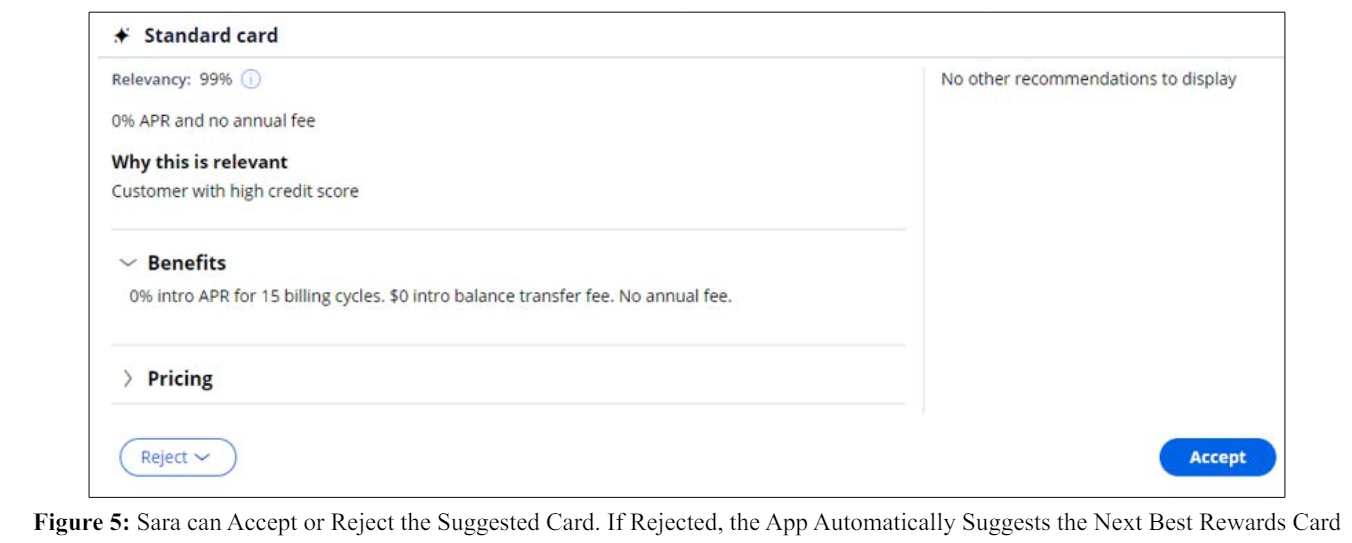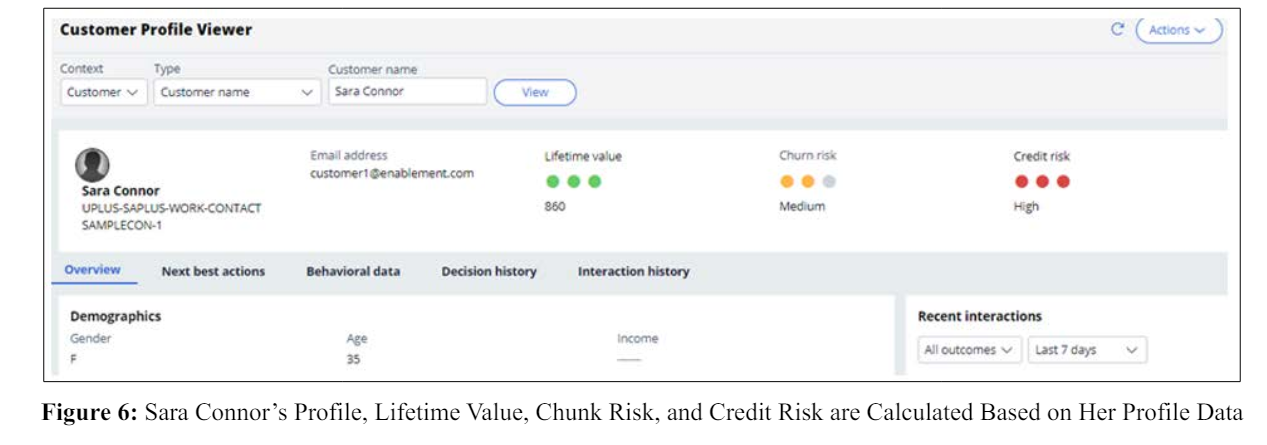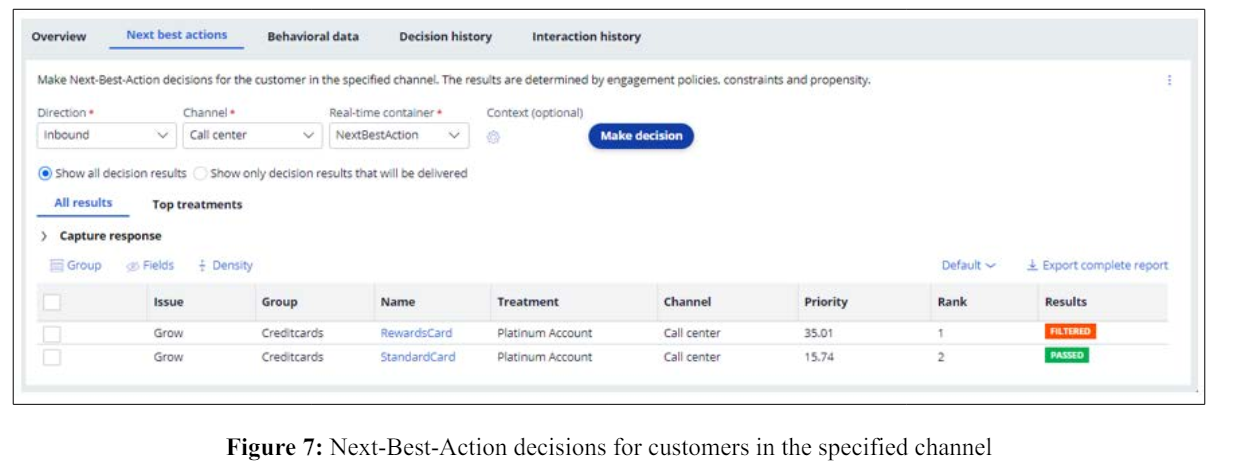Author(s): Praveen Kumar Tammana
Pega's Customer Decision Hub represents a paradigm shift in customer engagement, harnessing the power of big data, predictive and adaptive analytics, and AI to deliver personalized, contextually relevant customer experiences. This innovative platform transforms traditional marketing strategies, enabling realtime, omni-channel interactions tailored to individual customer needs and behaviors. It leverages advanced AI for decision-making, allowing businesses to dynamically adjust their strategies based on real-time data, ensuring optimal customer engagement and maximizing value. By integrating seamlessly across various channels and touchpoints, the Customer Decision Hub not only enhances customer experience but also significantly boosts business efficiency and effectiveness, ushering in a new era of customer-centric marketing and engagement strategies.
In the digital era, where customer expectations are perpetually evolving, the ability to deliver personalized, real-time responses has become crucial for businesses. Pega's Customer Decision Hub emerges as a pivotal solution in this landscape, transforming how organizations interact with their customers. This paper delves into the capabilities of the Customer Decision Hub, which leverages big data, predictive and adaptive analytics, and artificial intelligence (AI) to optimize customer interactions across various channels. By examining its mechanisms and impact, we aim to understand how Pega's platform enables businesses to make informed, real-time decisions, thus enhancing customer experiences and maximizing organizational value
Real-time decision-making in the business context, as demonstrated by Pega's Customer Decision Hub, is defined as the ability to make informed decisions almost instantaneously based on current data. This is essential in today's fast-paced business environment where consumer preferences and market dynamics are constantly evolving. Real-time decision-making allows companies to respond promptly and effectively to these changes, enhancing customer experiences and maximizing business value. The integration of AI, predictive analytics, and adaptive learning in Pega’s system exemplifies how real-time decision-making can lead to optimized customer interactions and business strategies.
Real-time decision-making in the modern business environment, as illustrated through Pega's Customer Decision Hub, is the process of analyzing and responding to business events and customer interactions as they occur. This approach is crucial in today's fastpaced, data-driven world where consumer preferences and market conditions are in constant flux. Utilizing AI and machine learning, real-time decision-making systems like Pega’s can process vast amounts of data instantaneously, allowing businesses to make informed decisions quickly. This capability is vital for enhancing customer experience, personalizing interactions, and maximizing business outcomes. Real-time decision-making enables businesses to remain agile, competitive, and responsive to ever-changing market dynamics.
The shift from traditional decision-making processes to real-time approaches represents a significant evolution in business strategy. Traditional decision-making often involves slower, retrospective analyses based on past data, which can be inadequate in a rapidly changing market. Real-time decision-making, however, leverages current data and predictive analytics to make immediate, informed decisions. Pega’s Customer Decision Hub illustrates this shift by using AI to process large volumes of data in real time, enabling businesses to tailor their responses to individual customer interactions dynamically. This approach not only improves customer engagement but also enhances the overall agility and competitiveness of the business.
Pega Customer Decision Hub is an advanced decision-making platform that optimizes customer engagement by unifying data, analytics, and channels. Its core function is to act as a centralized "brain" that continuously analyzes customer data and interactions, enabling real-time, personalized customer experiences across various channels. The platform integrates predictive and adaptivemodels, business rules, and customer data, facilitating the delivery of the next best action for each customer interaction. This approach ensures consistent, relevant, and empathetic engagement, crucial for building long-term customer relationships and enhancing customer lifetime value.
Pega Customer Decision Hub is a sophisticated customer engagement platform that centralizes decision-making processes using AI and advanced analytics. Its architecture is designed to integrate various customer data sources, analytics, and communication channels into a single framework. This integration allows for real-time, personalized customer interactions across multiple touch points.
Functionally, the Hub employs predictive and adaptive models along with traditional business rules. These elements work together to determine the most appropriate next action for each customer interaction, whether it's an offer, service action, or informational content. The platform's design ensures consistent and relevant experiences by adapting to the context of each customer interaction.
Additionally, the Hub's machine learning algorithms continuously learn and evolve from each customer interaction, improving the decision-making process over time. This feature ensures that the recommendations remain relevant over time and in sync with changing customer behaviors and preferences. The Hub’s omni-channel capability ensures a unified customer experience whether the interaction occurs in-store, online, over the phone, or through other channels.

Pega Customer Decision Hub extensively integrates artificial intelligence and machine learning to drive its decision-making processes. AI is employed to analyze patterns and predict customer behavior, enabling personalized engagement strategies. Machine learning algorithms in the platform are adaptive, improving their accuracy with each interaction. This continuous learning aspect ensures that the system remains up-to-date with changing customer behaviors and preferences. AI-driven arbitration in the platform prioritizes customer actions based on various factors, including propensity, context, and business value, ensuring that the actions align with both customer needs and business objectives.
Pega Customer Decision Hub operates on a real-time decisionmaking mechanism, primarily driven by its advanced AI capabilities. This mechanism involves analyzing a vast array of data points instantaneously, enabling the system to deliver the most appropriate customer engagement actions at any given moment. The Hub processes incoming data from various channels and touchpoints, instantly evaluating customer interactions. By leveraging this real-time data, the Hub can dynamically adjust strategies and decisions, ensuring that each customer interaction is personalized and contextually relevant.
Pega’s Decision Hub processes data in real-time by continuously analyzing customer interactions across various channels. This analysis includes reviewing current and historical data, contextual information, and customer behavior patterns. The Hub's architecture is designed to rapidly process and interpret large volumes of data, enabling it to deliver immediate insights and decisions. This real-time processing is crucial for adapting to the ever-changing dynamics of customer interactions and for providing timely and relevant responses.
Predictive analytics and adaptive models play a pivotal role in Pega’s Decision Hub. Predictive analytics use historical data to forecast future customer behavior, enabling the Hub to anticipate customer needs and preferences. These predictions inform the decision-making process, helping to tailor interactions to individual customer profiles. Adaptive models, on the other hand, learn from ongoing interactions, constantly refining and improving their predictions based on new data. This continuous learning ensures that the decision-making remains accurate and relevant, adapting to changes in customer behavior and preferences over time. Together, these technologies enable Pega’s Hub to deliver sophisticated, data-driven customer engagement strategies.
Pega Customer Decision Hub significantly enhances customer experience by enabling real-time, personalized interactions. This impact is rooted in the Hub's ability to analyze customer data rapidly and deliver contextually relevant actions. By employing AI and machine learning, the Hub understands customer preferences and behaviors, leading to more meaningful and engaging interactions. This results in increased customer satisfaction and loyalty, as customers receive offers and information that resonate with their individual needs and circumstances.
While specific case studies were not provided in the text, the general application of Pega’s technology in real-time customer engagement can be inferred. Businesses using Pega Customer Decision Hub have seen improved engagement through real-time interactions. For instance, a retail bank could use the Hub to analyze a customer's transaction history and provide personalized credit card offers, while a service provider might use it to predict and proactively address service issues. These applications demonstrate how real-time data processing and decision-making can lead to more effective and timely customer interactions. The following example shows how customer service recommends credit card offers.





Pega’s technology enables personalized customer experiences by integrating predictive analytics, adaptive learning, and realtime decisioning. This combination allows the Hub to deliver highly individualized interactions. For example, by evaluating a customer's past behavior and current context, the Hub can suggest the next best action that aligns with the customer's immediate needs and preferences. This level of personalization means that customers receive offers, information, and services that are not only relevant but also timely, thereby enhancing the overall customer experience and fostering a deeper connection with the brand.
Real-time decision-making, as facilitated by Pega Customer Decision Hub, significantly enhances customer satisfaction and loyalty. By analyzing data in real-time, the Hub can deliver highly personalized experiences, relevant offers, and proactive service. This immediacy and relevance in interactions meet and often exceed customer expectations, fostering a sense of being valued and understood. The result is increased customer satisfaction, leading to stronger loyalty and a higher likelihood of repeat business and referrals.
Pega’s Decision Hub contributes to operational efficiency and cost-effectiveness in several ways. Firstly, by automating decisionmaking processes, it reduces the need for manual intervention, thereby saving time and labor costs. Secondly, its predictive analytics capabilities enable businesses to anticipate customer needs and preferences, leading to more effective targeting and reduced waste in marketing efforts. Finally, the Hub’s ability to integrate with various channels and systems simplifies operational workflows, reducing the complexity and cost of managing multiple disparate systems. These efficiencies not only reduce operational costs but also enable businesses to respond more swiftly and effectively to market changes and customer needs.
Implementing real-time decision-making systems like Pega's Customer Decision Hub presents several challenges. The complexity of integrating such systems with existing IT infrastructure can be significant. Ensuring that these systems can process and analyze large volumes of data efficiently is crucial. Additionally, there's the challenge of ensuring that the decisionmaking algorithms are accurate and reliable. Businesses must also invest in training their workforce to effectively use and manage these sophisticated systems. Overcoming these challenges requires a clear strategy, technical expertise, and often, a cultural shift towards embracing advanced technology in decision-making processes.
The use of customer data in systems like Pega’s Customer Decision Hub raises important ethical and privacy considerations. Ensuring compliance with data protection laws, such as GDPR and CCPA, is critical. Businesses must be transparent about how they collect, use, and store customer data. It is vital to ensure that customer data is used in a way that respects customer privacy and consent. Ethical considerations also extend to ensuring that the AI and algorithms used in the decision-making process do not perpetuate biases or discrimination. Adequate measures should be in place to regularly audit and review the ethical implications of these systems.
The evolution of real-time decision-making technologies is likely to see significant advancements in AI and machine learning capabilities. There will be a greater emphasis on predictive analytics that anticipate customer needs even more accurately. Technologies like the Internet of Things (IoT) and edge computing will enhance real-time data collection and analysis, enabling more nuanced and immediate decisions. Furthermore, advancements in natural language processing (NLP) and voice recognition will likely make these systems more interactive and intuitive. The integration with blockchain could also emerge, offering enhanced security and transparency in decision-making processes.
Future enhancements to Pega Customer Decision Hub may include deeper integration with emerging technologies like augmented reality (AR) and virtual reality (VR) for more immersive customer experiences. The platform might also integrate advanced behavioralanalytics to understand customer emotions and sentiments better, allowing for more empathetic and tailored responses. We might see the incorporation of federated learning models for improved data privacy, allowing AI models to learn from decentralized data sources. Additionally, Pega could enhance its platform with more robust self-learning capabilities, enabling the system to adapt and evolve strategies based on real-time feedback and changing market dynamics.
The Pega Customer Decision Hub represents a significant shift in how businesses approach customer engagement and decisionmaking. Leveraging big data, AI, and analytics, it moves beyond traditional marketing strategies, enabling a more personalized, contextually relevant, and empathetic customer experience. This platform, driven by predictive and adaptive models, excels in delivering real-time, appropriate actions across multiple channels, thus maximizing customer value and business outcomes.
The centralized decision-making 'brain' of the Hub intelligently analyzes customer data, predicts needs, and suggests next-bestactions, ensuring consistency across all interaction points. This approach not only enhances customer satisfaction but also drives operational efficiency and boosts business growth.
Furthermore, the Hub's self-learning capabilities and integration with various channels and external platforms showcase its adaptability and foresight in catering to evolving market needs. Impact Analyzer and other built-in tools provide valuable insights into the effectiveness of actions and strategies, facilitating continuous improvement.
In conclusion, Pega Customer Decision Hub exemplifies the future of customer engagement - intelligent, responsive, and customercentric. Its ability to harmonize business needs with customer expectations through smart, real-time decision-making sets a new standard in customer relationship management [1-21].
